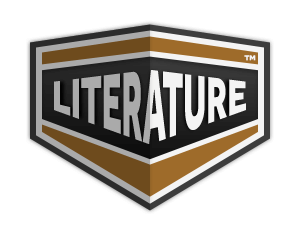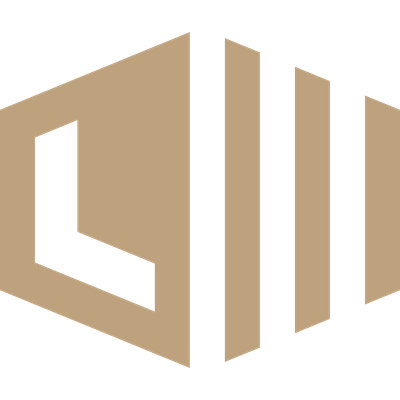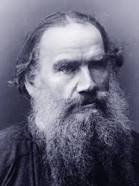On Popular Education Page #3
"On Popular Education" is a thought-provoking essay by Leo Tolstoy in which the renowned Russian author explores the role of education in shaping individuals and society. Written in 1862, Tolstoy critiques the existing educational systems of his time, advocating for a more accessible, practical, and moral approach to learning. He emphasizes the importance of fostering critical thinking and moral values over rote memorization, urging educators to nurture the innate curiosity of learners. Tolstoy's reflections serve as a powerful call for a more humane and equitable educational framework that empowers individuals to contribute meaningfully to society.
(or copy-books). Make on them a line of this size.' (The teacher draws on the blackboard a line two or four inches in length, or shows on the ruler that length.) 'Rub it off. How many lines are left?'--'Not one.'--'Draw several such lines.' It would be unnatural to invent any other exercises in order to acquaint the children with number one. It suffices to rouse in them that conception of unity which they, no doubt, had previous to their school instruction." Then Mr. Bunákov speaks of exercises on the board, and so on, and Mr. Evtushévski of the number four with its decomposition. Before examining the theory itself of the transmission of ideas, the question involuntarily arises whether that theory is not mistaken in its very problem. Has the condition of the pedagogical material with which it has to do been correctly defined? The first thing that startles us is the strange relation to some imaginary children, to such as I, at least, have never seen in the Russian Empire. The conversations, and the information which they impart, refer to children of less than two years of age, because two-year-old children know all that is contained in them, but as to the questions which have to be asked, they have reference to parrots. Any pupil of six, seven, eight, or nine years will not understand a thing in these questions, because he knows all about that, and cannot make out what it all means. The demands for such conversations evince either complete ignorance, or a desire to ignore that degree of development on which the pupils stand. Maybe the children of Hottentots and negroes, or some German children, do not know what is imparted to them in such conversations, but Russian children, except demented ones, all those who come to a school, not only know what is up and what down, what is a bench and what a table, what is two and what one, and so forth, but, in my experience, the peasant children who are sent to school by their parents can every one of them express their thoughts well and correctly, can understand another person's thought (if it is expressed in Russian), and can count to twenty and more; playing with knuckle-bones they count in pairs and sixes, and they know how many points and pairs there are in a six. Frequently the pupils who came to my school brought with them the problem with the geese, and explained it to me. But even if we admit that children possess no such conceptions as those the pedagogues want to impart to them by means of conversations, I do not find the method chosen by them to be correct. Thus, for example, Mr. Bunákov has written a reader. This book is to be used in conjunction with the conversations to teach the children language. I have run through the book and have found it to be a series of bad language blunders, wherever extracts from other books are not quoted. The same complete ignorance of language I have found in Mr. Evtushévski's problems. Mr. Evtushévski wants to give ideas by means of problems. First of all he ought to have seen to it that the tool for the transmission of ideas, that is, the language, was correct. What has been mentioned here refers to the form in which the development is imparted. Let us look at the contents themselves. Mr. Bunákov proposes the following questions to be put to the children: "Where can you see cats? where a magpie? where sand? where a wasp and a suslik? what are a suslik and a magpie and a cat covered with, and what are the parts of their bodies?" (The suslik is a favourite animal of pedagogy, no doubt because not one peasant child in the centre of Russia knows that word.) "Naturally the teacher does not always put these questions straight to the children, as forming the predetermined programme of the lesson; more frequently the small and undeveloped children have to be led up to the solution of the question of the programme by a series of suggestive questions, by directing their attention to the side of the subject which is more correct at the given moment, or by inciting them to recall something from their previous observations. Thus the teacher need not put the question directly: 'Where can a wasp be seen?' but, turning to this or that pupil, he may ask him whether he has seen a wasp, where he has seen it, and then only, combining the replies of several pupils, compose an answer to the first question of his programme. In answering the teacher's questions, the children will often connect several remarks that have no direct relation to the matter; for example, when the question is about what the parts of a magpie are, one may say irrelevantly that a magpie jumps, another that it chatters funnily, a third that it steals things,--let them add and give utterance to everything that arises in their memory or imagination,--it is the teacher's business to concentrate their attention in accordance with the programme, and these remarks and additions of the children he should take notice of for the purpose of elaborating the other parts of the programme. In viewing a new subject, the children at every convenient opportunity return to the subjects which have already been under consideration. Since they have observed that a magpie is covered with feathers, the teacher asks: 'Is the suslik also covered with feathers? What is it covered with? And what is a chicken covered with? and a horse? and a lizard?' When they have observed that a magpie has two legs, the teacher asks: 'How many legs has a dog? and a fox? and a chicken? and a wasp? What other animals do you know with two legs? with four? with six?'" Involuntarily the question arises: Do the children know, or do they not know, what is so well explained to them in these conversations? If the pupils know it all, then, upon occasion, in the street or at home, where they do not need to raise their left hands, they will certainly be able to tell it in more beautiful and more correct Russian than they are ordered to do. They will certainly not say that a horse is "covered" with wool; if so, why are they compelled to repeat these questions just as the teacher has put them? But if they do not know them (which is not to be admitted except as regards the suslik), the question arises: by what will the teacher be guided in what is with so much unction called the programme of questions,--by the science of zoology, or by logic? or by the science of eloquence? But if by none of the sciences, and merely by the desire to talk about what is visible in the objects, there are so many visible things in objects, and they are so diversified, that a guiding thread is needed to show what to talk upon, whereas in objective instruction there is no such thread, and there can be none. All human knowledge is subdivided for the purpose that it may more conveniently be gathered, united, and transmitted, and these subdivisions are called sciences. But outside their scientific
Translation
Translate and read this book in other languages:
Select another language:
- - Select -
- 简体中文 (Chinese - Simplified)
- 繁體中文 (Chinese - Traditional)
- Español (Spanish)
- Esperanto (Esperanto)
- 日本語 (Japanese)
- Português (Portuguese)
- Deutsch (German)
- العربية (Arabic)
- Français (French)
- Русский (Russian)
- ಕನ್ನಡ (Kannada)
- 한국어 (Korean)
- עברית (Hebrew)
- Gaeilge (Irish)
- Українська (Ukrainian)
- اردو (Urdu)
- Magyar (Hungarian)
- मानक हिन्दी (Hindi)
- Indonesia (Indonesian)
- Italiano (Italian)
- தமிழ் (Tamil)
- Türkçe (Turkish)
- తెలుగు (Telugu)
- ภาษาไทย (Thai)
- Tiếng Việt (Vietnamese)
- Čeština (Czech)
- Polski (Polish)
- Bahasa Indonesia (Indonesian)
- Românește (Romanian)
- Nederlands (Dutch)
- Ελληνικά (Greek)
- Latinum (Latin)
- Svenska (Swedish)
- Dansk (Danish)
- Suomi (Finnish)
- فارسی (Persian)
- ייִדיש (Yiddish)
- հայերեն (Armenian)
- Norsk (Norwegian)
- English (English)
Citation
Use the citation below to add this book to your bibliography:
Style:MLAChicagoAPA
"On Popular Education Books." Literature.com. STANDS4 LLC, 2025. Web. 22 Feb. 2025. <https://www.literature.com/book/on_popular_education_3979>.








Discuss this On Popular Education book with the community:
Report Comment
We're doing our best to make sure our content is useful, accurate and safe.
If by any chance you spot an inappropriate comment while navigating through our website please use this form to let us know, and we'll take care of it shortly.
Attachment
You need to be logged in to favorite.
Log In